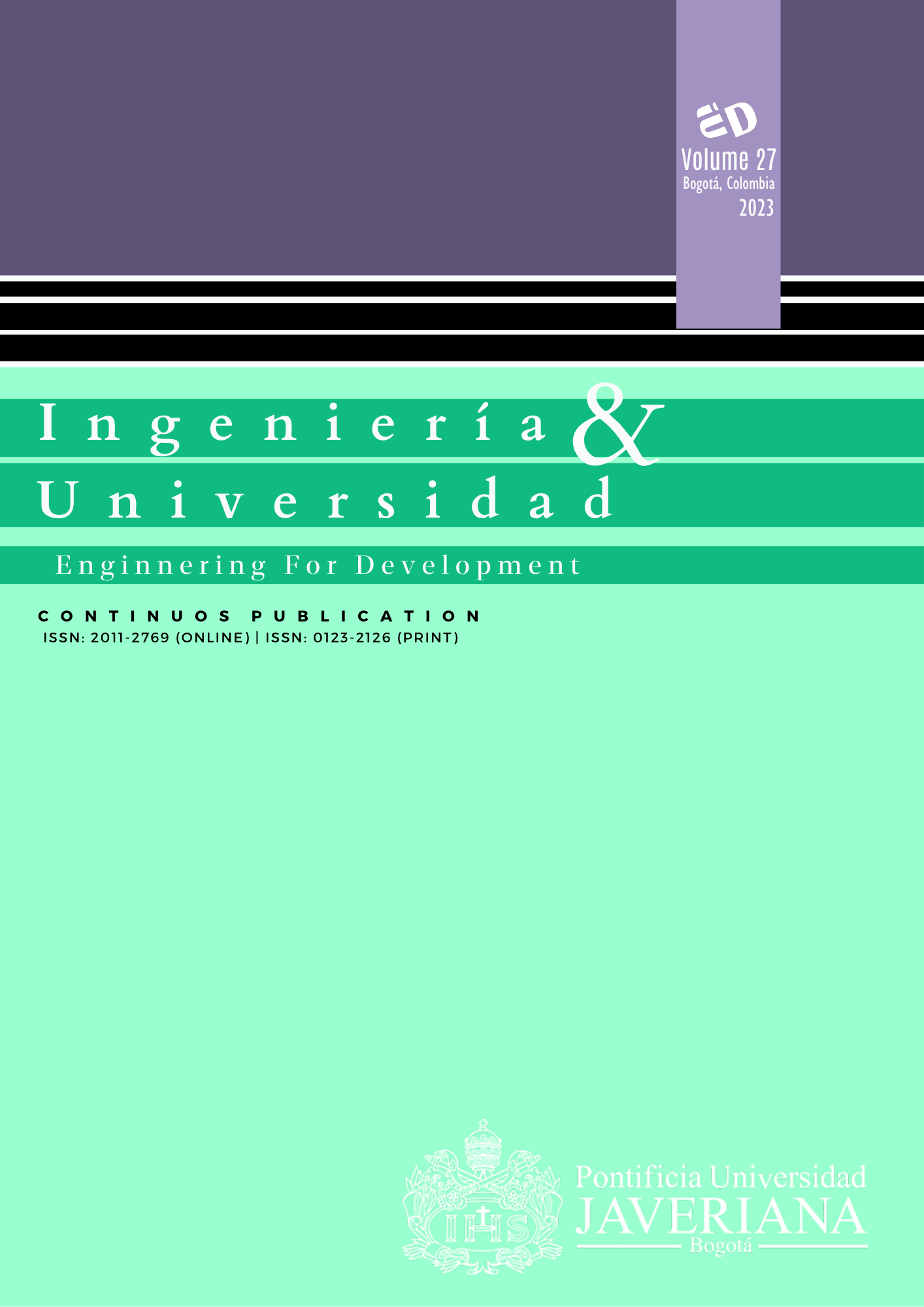Abstract
The Colombian Air Force, through the FACSAT program, intends to promote the Colombian space initiative to reach the level of independence that will contribute to the State interest with the participation of the Academy and the Industry. In order to contribute to the technological development in the aerospace area, this article proposes the operational orbit for the FACSAT-2 satellite mission, which objective is to obtain images that facilitate the detection and classification of extensions of Colombian terrain with the use of a satellite. The operational orbit is fundamental in the design of the satellite system and its selection considers factors such as operational requirements, location and extension of the country, launch windows, availability of commercial orbits and the results of different simulated scenarios and data obtained from FACSAT-1 satellite. Consequently, this development will enable capabilities to support decision making in the design and analysis of future space missions in the country.
W. J. Larson y J. R. Wertz, Space Mission Analysis and Design, El Segundo, California: The Space Technology Library, 1999.
M. Capderou, Handbook of Satellite Orbits, Pasadena, California: Springer, 2014.
C. Nieto-Peroy y M. R. Emami, «CubeSat Mission: From Design to Operation,» Applied Sciences, Toronto, 2019.
H. Riebeek y R. Simmon, «Catalog of Earth Satellite Orbits,» 04 09 2009. [En línea]. Available: https://earthobservatory.nasa.gov/features/OrbitsCatalog. [Último acceso: 29 03 2020].
S. S. Board y N. R. Council, «Landsat and Beyond: Sustaining and Enhancing the Nation's Land Imaging Program,» National Academies Press, 2014.
Systems Tool Kit , «STK free trial options,» 2020. [En línea]. Available: https://licensing.agi.com/stk/.
P. Sintes, «Mission and Thermal Analysis of the UPC Cubesat,» Universitat Politécnica de Catalunya, Barcelona, 2009.
L. Qiao, «Garada SAR formation flying - Orbit Modelling and Analysis, Simulated Mission Planning,» Australian Centre for Space Engineering Research (ACSER), Sydney, 2013.
K. Kamalaldin y M. Okasha, «Low Inclination Circular Orbits for Remote Sensing Satellites,» Kuala Lumpur , 2014.
I. Z. M. Sanad, «Tradeoffs for Selecting Orbital Parameters of an Earth Observation Satellite,» ResearchGate, Vancouver, 2012.
P. Arroyo, «Mission and Thermal Analysis of the UPC Cubesat,» Barcelona, 2009.
S. Cakaj, «The Coverage Belt dor Low Earth Orbiting Satellites,» ResearchGate, 2016.
R. Jiménez, S. Rincón y L. Cardenas, «FACSAT-1 Ground Station performance,» Washington D.C, 2019.
IGAC, «Contenido Geoportal IGAC,» 21 01 2016. [En línea]. Available: http://www2.igac.gov.co/igac_web/contenidos/plantilla_ggenera_titulo_contenido.jsp?idMenu=212.
G. Poveda, «PROPUESTA DE ÓRBITA GEOESTACIONARIA PARA EL SATÉLITE ARTIFICIAL FACSAT01,» Santiago de Cali, 2016.
Presidencia, «Asi es Colombia,» 08 05 2019. [En línea]. Available: http://historico.presidencia.gov.co/asiescolombia/colombia_mapa_oficial.pdf.
IGAC, «Geoportal-Fronteras Marítimas y Mapa Físico,» 30 09 2020. [En línea]. Available: https://geoportal.igac.gov.co/contenido/tematicos.
Cancillería de Colombia, «Delimitación Marítima Colombia,» 10 02 2021. [En línea]. Available: https://www.cancilleria.gov.co/politica/delimitacion-jamaica.
Australian Space Academy, «SPECIFYING SATELLITE ORBITS,» Australian Space Academy, 10 09 2020. [En línea]. Available: http://www.spaceacademy.net.au/watch/track/orbspec.htm. [Último acceso: 02 05 2020].
D. Selva y D. Krejcl, «A survey and assessment of the capabilities of Cubesats for Earth observation,» ELSEVIER. Acta Astronautica, Cambridge, MA, 2012.
I. Shuib y M. Idres, «Investigation of Malaysian Low Earth Orbits for Remote Sensing Applications,» Kuala Lumpur, 2016.
J. Woodburn y S. Lynch, «A NUMERICAL STUDY OF ORBIT LIFETIME,» ResearchGate, Washington, 2005.
J. Sellers, «Satellite Tool Kit Astronautics Primer,» McGraw-Hill Inc., New York, 1997.
H. Septanto, S. Utama y R. Heru, «Indonesia coverage simulation of SAR satellite at near-equatorial orbit,» IOP Conference Series: Earth and Environmental Science, Jakarta, 2017.
N. Crisp, S. Livadiotti y P. Roberts, «A Semi-Analytical Method for Calculating Revisit Time for Satellite Constellations with Discontinuous Coverage,» The University of Manchester, Manchester, 2018.
K. Schilling, «Mission Analyses for Low-Earth-Observation - Missions with Spacecraft Formations,» NATO, Würzburg, 2013.
A. Rosengren, «Dynamical cartography of Earth satellite orbits,» University of Arizona, Tucson, 2018.
H. Yi, ChenX y D. Wang, «SATELLITE IMAGING DIRECTION ANGLES ESTIMATION METHOD BASED ON RATIONAL POLYNOMIAL COEFFICIENTS,» The International Archives of the Photogrammetry, Remote Sensing and Spatial Information Sciences, Beijing, 2020.
D. Oltrogge y K. Leveque, «An Evaluation of CubeSat Orbital Decay,» Colorado Springs, 2011.
L. Qiao, C. Rizos y A. Dempster, «Analysis and Comparison of CubeSat Lifetime,» Australian Centre for Space Engineering Research, Sydney, 2014.
Systems Tool Kit, «STK Numerical Integration,» 30 01 2021. [En línea]. Available: https://help.agi.com/STKComponents/html/NumericalIntegrators.htm.
Systems Tool Kit, «Defining the Fidelity of Calculations - Lifetime Tool,» 01 09 2016. [En línea]. Available: https://help.agi.com/stk/11.0.1/Content/stk/tools-11.htm. [Último acceso: 21 03 2021].

This work is licensed under a Creative Commons Attribution 4.0 International License.
Copyright (c) 2023 Julian Andres Delgado-Martinez, MsC, Santiago Muñoz-Giraldo, Bsc



